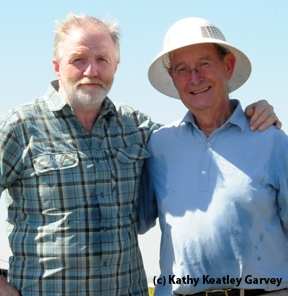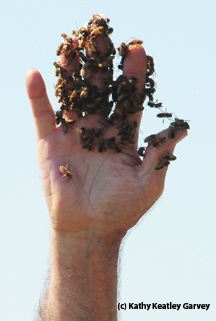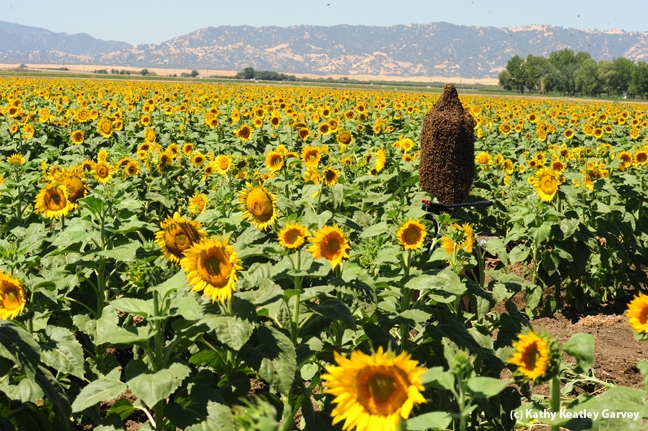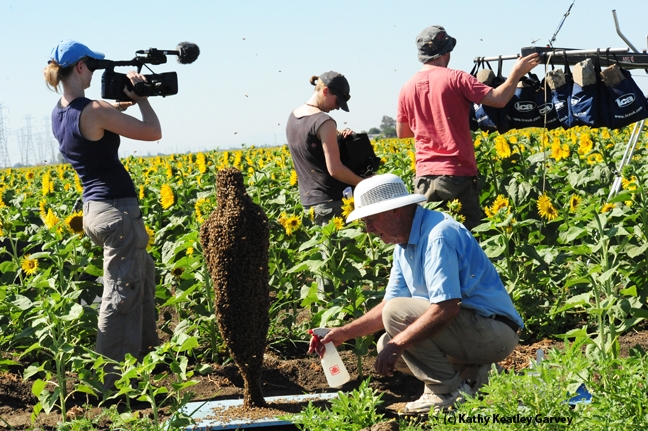
The date: July 22, 2012. The place: a sunfiower field in Winters, Calif.
We watched as a BBC crew set up their cameras while professional bee wrangler Norm Gary, emeritus professor of entomology at UC Davis, trained his bees for the documentary that would be titled "Ultimate Swarms."
Documentary host/zoologist George McGavin of Oxford, England, (he's an honorary research associate at the Oxford University Museum of Natural History), walked among the rows, rehearsing his lines.
Gary, who has wrangled bees for more than 40 years for movies, TV shows, and commercials (including approximately 18 movies, 70 or so TV shows, and about a half-dozen commercials) prepped McGavin about honey bee behavior.
The bees "are in a swarm state, completely non-aggressive," McGavin told the camera. "They're not protecting anything, not protecting their young or honey, simply protecting the queen in the heart of this swarm until a new home is found."
McGavin related that honey bees are worth "a staggering $180 billion a year, and without them over a third of all the food we eat wouldn't exist."
Honey bees are just one part of the one-hour "Ultimate Swarms," which will premiere at 8 p.m. (Eastern Standard Time and Pacific Time), Tuesday, Oct. 22 on the television show, Animal Planet.

In one segment, McGavin becomes the queen bee, thanks to Norm Gary and a swarm of 40,000 worker bees clustering on the host.
“Swarms," McGavin says, "are one of the greatest spectacles on earth.” Far from "being the ultimate nightmare, they are one of nature's most ingenious solutions."
"By joining together, even the most simplest of creatures can achieve the impossible," McGavin said.)
As for Gary, who will be 80 next month, says this was his last shoot as a professional bee wrangler. Last month he retired from beekeeping, after 66 years of keeping bees. "Training bees to do the right behavior on cue gets very complicated and gave me the opportunity to apply science as well as practical 'in-the-trench' beekeeping operations," Gary said, describing bee wrangling as "making bees 'act' in various scenes as called for by the script." A good example of his work is the bee scene in the movie, Fried Green Tomatoes.
However, Gary still has his specially patented pheromones (his invention), and he plans to come out of retirement to help UC Agriculture and Natural Resources Vice President Barbara Allen-Diaz fulfill her "promise for education" to help UC students in financial need. (See website to donate to the cause. If Allen-Diaz reaches her goal of $2500, the bee stunt will take place next spring at the Harry H. Laidlaw Jr. Honey Bee Research Facility, UC Davis,)
Attached Images:

